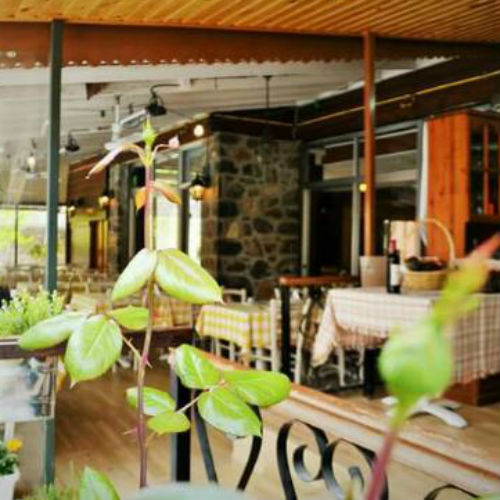Picture Perfect: Where to take the perfect holiday shots in Cyprus

By Alex Mita
Ambrose Bierce once said that a photograph is a picture painted by the sun without instruction in art. Well, if there’s one thing we have plenty of here in Cyprus it’s sunshine.
Travelling abroad is enough to awaken the shutterbug in us all, whether it’s the change of scenery or the desire to explore and discover. While the general practice when visiting the island is to work on that tan on its sun-soaked beaches, the urge to capture what we see on our smart phones or digital cameras, soon takes over.
Cyprus is naturally photogenic. The raw, rugged beauty of her mountains, the flowing hills and the mesmerising coasts, speckled with archaeological sites and stunning views is enough to inspire us all. To help you in your quest for that “Kodak moment,” here is a list of what are perhaps the most photogenic places on the island.
Aphrodite’s Rock (Petra tou Romiou)
Located on the coastal road between Limassol and Paphos, the legendary birthplace of Aphrodite is one of the most photographed places on the island, with thousands of visitors each year. To get the best results, try to visit when there aren’t too many people, and when the sun is low on the horizon to get that lovely warm light.
Avakas Gorge
Situated 16km west of Paphos, and at the start of the Akamas Peninsula, the gorge is one of the island’s most beautiful nature trails. The trail can be quite challenging to tackle at some points due to a few tight spots. The best time to visit the gorge is in autumn or spring, as it can get quite hot during summer, and there is a danger of flash flooding in the winter. A small, light tripod would be useful, as some of the parts of the gorge are poorly lit.
Curium Amphitheatre
A UNESCO World Heritage site, the ancient city of Curium is in the British Sovereign Base areas on the coastal road between Limassol and Paphos, near Episkopi. Built around the second century BCE, it was first intended to be used as a theatre but is later thought to also have been used for gladiator duels. Overlooking the Episkopi bay, it is a great place to take landscape shots, and the obligatory selfie.
Plan your trip well and wear comfortable clothing and shoes, as the site is very large and does involve plenty of walking and some climbing. Ask permission from the relevant authorities as to whether you are allowed to use a tripod on site.
To achieve better results when photographing there, try not to visit in the midday sun when the light of the sun is directly above you, especially if you are going to take family shots as you will get people squinting and shadows under their eyes. In order to avoid those other pesky tourists getting in your frame, plan your trip and arrive early in the morning to avoid large crowds.
Tzelefos Bridge
This Venetian Bridge, in the heart of the Paphos forest, a few miles from the village of Ayios Nikolaos, is a truly magical place. It is the largest of three Venetian bridges built in the area, with the other two being Elia and Roudia. The bridges were part of the Camel Road used in the transport of goods.
The Sea Caves at Cape Greco
Truly one of the most beautiful spots on the island, where you can literally throw yourself off a cliff and into the crystal-clear waters. Situated on the south-eastern part of the island, just outside Ayia Napa and Protaras, the entire Cape Greco National Park is strewn with nature trails and cycling paths, so you could make a day trip out of it. The sea caves and also a natural rock bridge nearby, are popular wedding photography spots, and it’s a great place to shoot those romantic silhouette shots. The caves are also close to Fig Tree Bay, voted 13th in the world’s most beautiful beaches by TripAdvisor.
The Larnaca Salt Lake
Located southwest of Larnaca near the old Larnaca Airport buildings, the salt lake – known locally as Alyki – is a protected nature reserve and one of the most important habitats in Europe for waterfowl.
Once a source of commerce from ancient times, the Salt Lake is also where the Hala Sultan Tekke Mosque, a Muslim pilgrimage site is found. The best time to visit is during the winter months, from November through to March, when the lake fills with water, becoming home to migrating birds.
The main attraction is the arrival of thousands of flamingos that use the salt lake as a stopover on their migratory journey, feeding on small brine shrimp found in the water.
When the lake is full it makes for some great landscape shots with the imposing Mosque mirrored in its waters.
Unfortunately, flamingos are a bit camera shy and tend to move far away from humans, so unless you have a big telephoto lens, you will find any attempt to photograph the birds frustrating, to say the least.
The Troodos Mountains
Yes, the entire mountain range is a photographer’s heaven, with a photo opportunity in almost every village you find. People are generally happy to have their photo taken, and keen to talk about any arts and crafts they might be involved with.
And, aside from the usual tourist attractions, like Lefkara, renowned for its lacemaking and architecture, and the abandoned village of Fikardou, any route you take up to the mountains is usually filled with hidden gems. The locals will usually be happy to share any great locations for you to visit near their village, just pop into any local coffee shop and have a chat. Be prepared to drink a lot of free coffees though. You have been warned.
Nicosia within the walls
If you take a stroll along the demarcation line in the old city of Nicosia you will be amazed by the architecture, and at the same time saddened by the reality of what 43 years of division have done to this great city.
However, be advised that although you may get away with taking some photos of army sentries, photography is usually forbidden in certain areas, so please do ask before taking any pictures.
If you are into street photography, you may wander through the maze of little sides streets branching off from Ledra Street, the city’s main thoroughfare, where there’s literally a shot around every corner. You can still find some traditional coffee shops, old tailors and cobblers still practising the trade.




